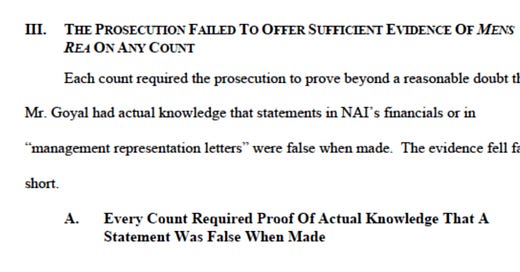Use umbrella text to keep judges oriented in legal briefs.
Using umbrella text after section headings helps readers see how different parts of your argument relate to each other.
One characteristic of well-organized legal briefs is that they never risk having a judge lose track of where they are in the development of an argument or in the brief as a whole. Nor should judges ever need to guess where an attorney is leading them. Good legal writing is transparent and doesn’t leave readers in suspense. It sets the reader’s expectations, then fulfills them.
Elegant Legal Writing includes a chapter (“Organization and Cohesion”) that explains the most important principles for writing coherent, well-organized briefs. Coherent briefs set out and stick to predictable structures in the brief as a whole and in all its sections.
Follow section headings with umbrella text before starting any subsections.
Here’s an organization tip that is familiar but underappreciated: include umbrella text between headings of different levels, such as between the start of an argument section and the first subheading within that section.
The screenshot below, from an appellate brief filed by the U.S. Department of Justice, provides a good example.
Including umbrella text after section headings helps readers stay oriented within your argument and understand how subsections relate to each other, to the parent section, and to the broader argument.
Use umbrella text for roadmaps and multi-issue rule statements.
The most common use of umbrella text is to provide a roadmap or otherwise show what to expect in the following subsections.
Another good use is to provide rule statements that apply to all a section’s subparts. For example, when arguing a motion to dismiss in a fraud case, you can use umbrella text at the top of an argument section to mention the heightened pleading standard applicable to fraud claims; since this pleading standard applies to all the elements of fraud, it ought to be mentioned before element-specific subsections.
This is analogous to the operation of factoring in math: you extract an element common to all subsections and place it just outside those subsections. This reduces redundancy and provides a more logical organization, making the brief more coherent.
For more legal writing advice, buy Elegant Legal Writing, subscribe to this blog, or contact Ryan McCarl to arrange a private workshop for your organization.
Ryan McCarl is a founding partner of Rushing McCarl LLP, author of Elegant Legal Writing (U. Cal. Press 2024), and adjunct professor at Loyola Law School. For more writing tips, subscribe to the Elegant Legal Writing newsletter and follow Ryan on LinkedIn. Ryan offers legal consulting services (through his firm) as well as fee-based private workshops.
Please share this post with your networks:
Subscribe for free to get future Elegant Legal Writing posts by email:
Connect with Ryan McCarl: Order the Elegant Legal Writing book | LinkedIn | Rushing McCarl LLP | Linktree | Second Stage (blog) | Twitter (X) | Substack | Threads | Bluesky




